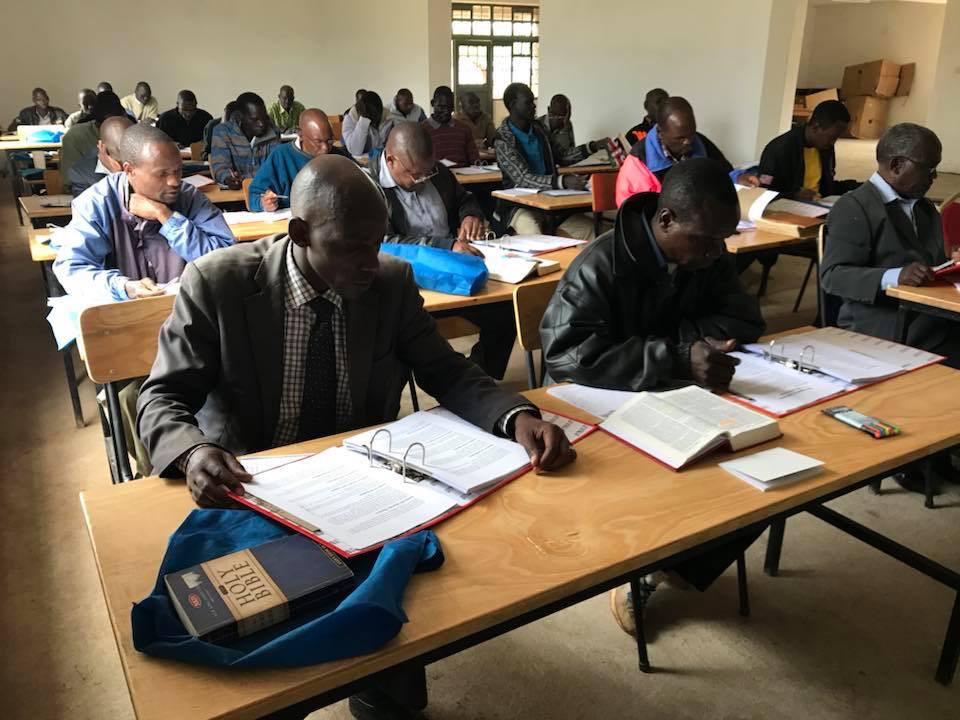Sustainability
/One major part of the construction in Kenya is sustainability. LIA is aware that Christianity is waning in the West (both Europe and the US) and it seems like a good policy to not rely on continuous giving from churches in the West. Sadly, it's almost expected that in the near future, Africans will be sending missionaries to the US.
Because of this, were designing in as much self-sufficiency as possible at the center. What does this mean? It means grey water reuse. Rain catchment. Solar power. Wind power. Hydro power. Gardening. Livestock. Using local materials as much as possible. Local masons and workers are used. Damming up a creek and stocking it with fish. For the last few years, oddly enough, I've been learning about aquaponics, gardening, rotational grazing (thanks to Joel Salatin!), and recently I met a neighbor that is retired from the renewable energy sector who gave me several ideas. Given the wind falling from the Ngong Hills, it's a natural, renewable energy source. We've already installed a solar powered well pump that will transfer water to a cistern at the top of the property. From there, the water will be gravity fed to all the buildings on the property. I'm looking into ways to harness that energy by installing several small in-line hydro power generators.
Not only is this a cost benefit, but is also good stewardship of what God has given us - the sun, the wind, and the rain. As an added bonus for all the Dave Ramsey lovers out there - this whole project is being paid for with cash. No debt is being taken on to pay for anything.
Solar panels waiting to be installed
From an architectural standpoint, most of the construction is masonry. (see below...straight, clean wood is difficult to come by and the termites in Africa are ferocious) Additionally, we will not have air conditioners. Living in Houston, that's anathema to me but the weather is pretty mild in Nairobi. The elevation is around 5700', the annual temperatures range between 45°-85°F, and the humidity levels are roughly between 50%-80%. So, we employ a few tricks to keep us comfortable.
In hot, low-humidity areas, humidity and shade are your friend (think Arizona & New Mexico). If you've ever been to Las Vegas, they have misters spraying you while you walk to the next casino to lose your money. The added humidity increases evaporative cooling on your skin. This can be used on roof tops by having timed sprayers coat the roof with water, which cools the roof as the water evaporates. Evaporation requires heat so as the water vaporizes, it takes heat with it, cooling off the roof. Also, we use things like thermal mass to regulate the temperature inside the buildings. The sun heats up the concrete or stone mass during the day, then releases that heat in the evening when the temperatures drop and is thereby cool again during the warmer parts of the day.
In hot, high-humidity areas, wind is your friend (think Gulf Coast states in the US). That's why just about every house in the humid south has several ceiling fans. The air movement helps with evaporation, which cools you down.
In our case, we'll be using thermal mass and shade, but also trying to direct the sometimes forceful wind falling off the hills to our benefit. Simple things like door and window placement play a big role here. Solar chimneys can be used - as they heat up the air inside them, the hot air rises and draws cooler air into the house. Thomas Jefferson used this principle at Monticello by using gas jets to heat the air in an interior dome. Similarly, Glenn Murcutt in Australia has used exhaust vents that employ the Venturi effect to draw hot air out of a house and cool air in. I'm also looking into geothermal cooling by running pipes through the ground that can feed cooled air into the house.
We're always looking for people to partner with us - whether that's through financial means or in this case, expertise! If you're an engineer, expert, amateur, whatever - I'd love to talk to you! We're always looking for creative ways to solve the problems of design.










